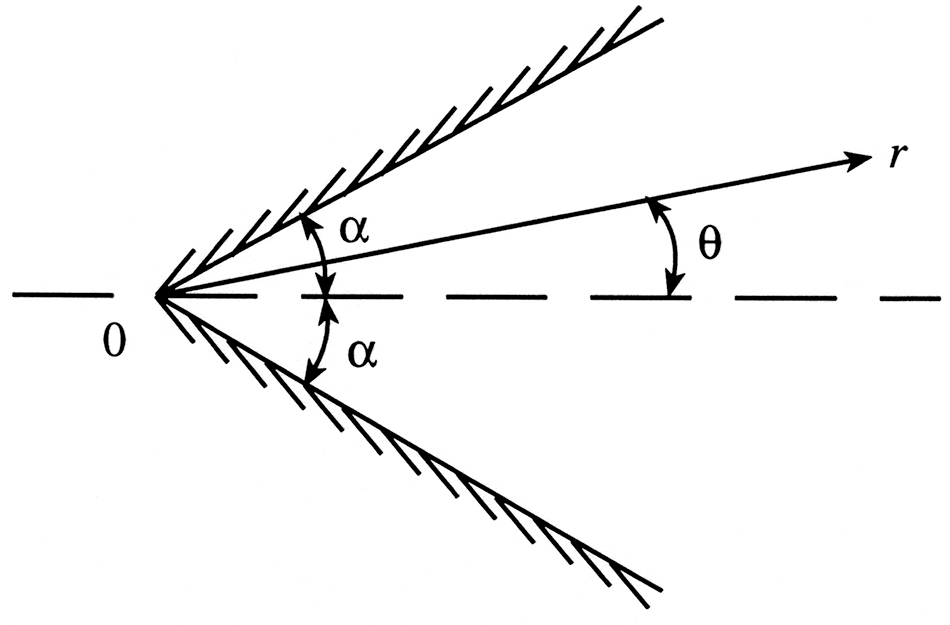22 Jeffrey-Hamel Flow
The Jeffrey-Hamel flow refers to a two-dimensional flow in the region between two intersecting plane walls. The steady flow between the stationary walls is caused by the presence of a source or sink of fluid at the point of intersection of the walls. This example affords an impressive illustration of the combined effects of convection and diffusion of vorticity generated at a rigid boundary. In addition, it plays a role in the development of viscous flow theory similar to that played by the two-dimensional Ising (1925) model in developing the theory of critical phenomena (Stanley, 1971).
22.1 The Exact Solution
Let us use the cylindrical polar coordinates
![]() with the plane walls located at
with the plane walls located at
![]() (Figure 22.1). The equations governing this flow are
(Figure 22.1). The equations governing this flow are

Figure 22.1 The Jeffrey-Hamel flow.
where
Let us consider a purely radial flow, and look for solutions ...
Get Introduction to Theoretical and Mathematical Fluid Dynamics now with the O’Reilly learning platform.
O’Reilly members experience books, live events, courses curated by job role, and more from O’Reilly and nearly 200 top publishers.

